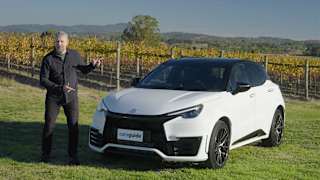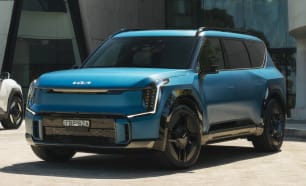Measuring 4855mm long, 1820mm wide, 1710mm tall and with a 2900mm wheelbase, the Honda Odyssey is not just an imposing behemoth on the outside, but also a spacious and practical people mover on the inside.
Up front, occupants are treated to plush and comfortable seats with electronic adjustment and individual fold-down armrests.
Storage options abound, with deep door pockets, a dual-chamber glove box, and a tricked-out centre storage console that can retract into the centre stack and features two hidden cupholders.
Because of the compact engine and transmission package, and the fact the centre console tucks away, there is actually just empty space between the two front occupants, which is a missed opportunity.
Maybe Honda could have put another storage bin there, or even a cooled box for chilled drinks on long road trips. Either way it’s a notable, unexploited cavity.
The second-row seats are probably the place to be in the Odyssey, though, with its two captain’s chairs offering supreme comfort.
Adjustability is also plentiful, with forward/backwards, recline and even left/right positioning available.
However, while there are cupholders and roof-mounted climate controls present, there really isn’t much else to keep second-row occupants, well, occupied.
Would be nice to see some charging ports or even entertainment screens to keep kids and adults placated on long journeys, but at least the head, shoulder, and legroom is generous.
In the third row, it’s a tighter squeeze, but I managed to get my 183cm (6'0") frame comfortable.
The three-row bench is the least comfy place to be, but there is a charging outlet and cupholders back there.
Those with child seats also take note, the second-row captain’s chairs top-tether anchor point is very low down on the seat back, meaning you might have to max out the strap length to get it there.
Also, because of the captain’s chairs, the top tether strap can be knocked off quite easily, as the inner shoulders of the seats are smooth offering nothing for the strap to catch onto if pushed towards the middle of the car.
And you can’t even install the car seat in the third row because the bench seat doesn’t feature any ISOFIX points.
With all seats in place, the boot will happily swallow 322 litres (VDA) of volume, more than enough for groceries, school bags or even the stroller.
However, the boot floor is quite deep, making the retrieval of bulkier and heavy items a little cumbersome.
With the third-row folded, though, that cavity is filled in and the Odyssey features a completely flat floor then able to take on 1725L of volume.
Honda has even found a place for the space saver spare wheel, though it’s not underneath the car or tucked into the boot floor as you'd expect.
The spare is under the two front seats, and requires the removal of some interior carpets and trim to access.
It’s not in the most convenient of places, but props to Honda for getting one in there when other seven-seaters just opt for a puncture repair kit.






